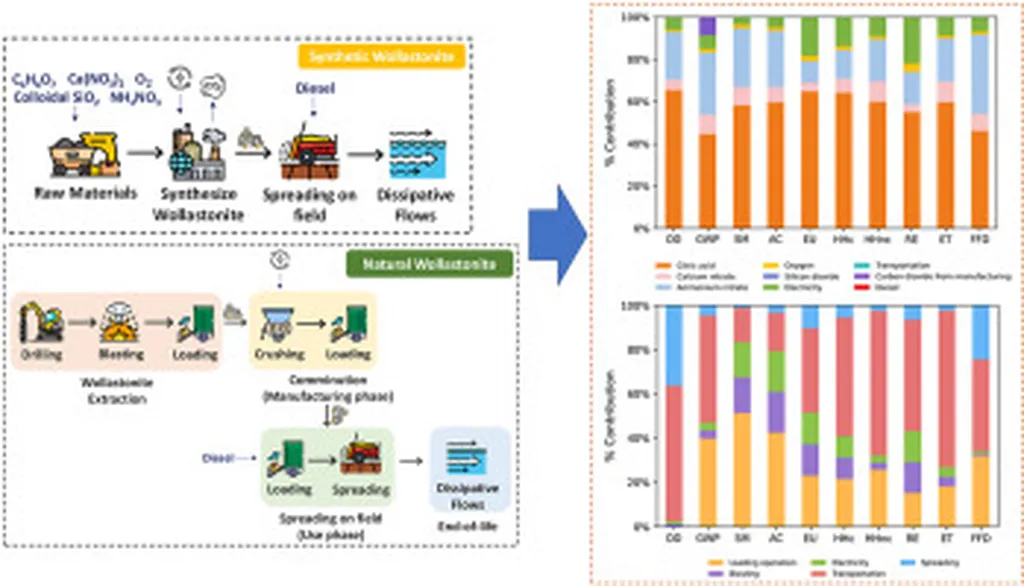In the quest to capture and utilize carbon dioxide (CO2), researchers have been exploring various natural minerals, with wollastonite emerging as a promising candidate. A recent study led by Prince Allah from the Fibre and Particle Engineering Research Unit at the University of Oulu in Finland, published in the Journal of CO2 Utilization (translated as “Journal of CO2 Utilization”), sheds new light on the wet carbonation process of wollastonite, offering insights that could significantly impact the energy sector.
The study focuses on the wet carbonation of wollastonite, a process that involves reacting the mineral with CO2 in the presence of water to form stable carbonates. This process is of particular interest because it not only captures CO2 but also produces materials that can be used in construction, potentially reducing the carbon footprint of the building industry.
Traditionally, the dissolution kinetics of wollastonite have been studied under high liquid-to-solid ratios, often above 1000. However, Allah’s research takes a different approach by investigating the effect of a significantly lower liquid-to-solid ratio (10) at ambient conditions. “The most efficient process to achieve maximum carbonation has proven elusive,” Allah explains. “We wanted to see if a lower liquid-to-solid ratio could enhance the carbonation process.”
The research team conducted wet carbonation experiments under free pH drift and used geochemical modeling to study the solution chemistry. The modeling was done using phreeqc coupled with the Minteq database. The results revealed that the lower liquid-to-solid ratio hindered the carbonation of wollastonite due to solution equilibration. To overcome this, the researchers altered the solution equilibrium and extended the carbonation process by dissolving CO2 for up to 2 hours.
The findings suggest that at an optimal liquid-to-solid ratio, wet carbonation of wollastonite can be achieved with a higher potential for carbon mineralization. This could have significant implications for the energy sector, particularly in the development of carbon capture and storage (CCS) technologies. By improving the efficiency of the carbonation process, it may be possible to capture more CO2 and produce valuable construction materials simultaneously.
“This research opens up new possibilities for the utilization of wollastonite in carbon capture,” Allah states. “It provides a more efficient and potentially cost-effective method for carbon mineralization, which could be a game-changer for the energy sector.”
The study’s insights could shape future developments in the field of carbon capture and utilization (CCU). By optimizing the wet carbonation process, researchers may be able to develop more efficient and sustainable methods for capturing CO2 and converting it into useful products. This could not only help mitigate the impacts of climate change but also create new economic opportunities in the energy sector.
As the world continues to seek innovative solutions to the challenges posed by CO2 emissions, research like Allah’s offers a glimmer of hope. By harnessing the power of natural minerals and advanced modeling techniques, we may be able to develop technologies that are not only effective but also environmentally friendly and economically viable.

